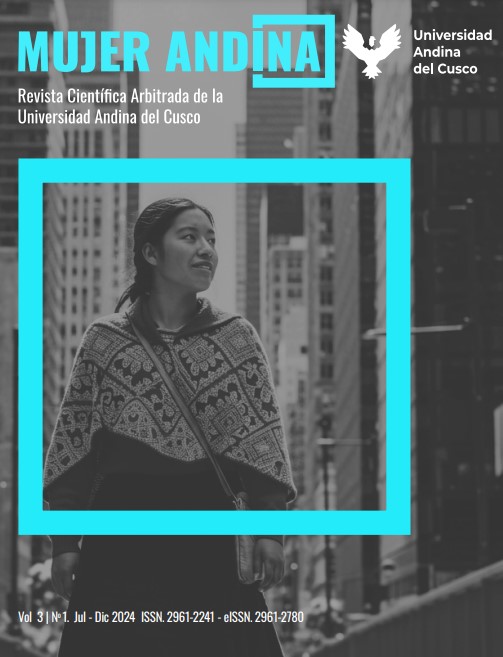How to create true gender equity to distinguish it from false gender equity
DOI:
https://doi.org/10.36881/ma.v3i1.950Keywords:
gender equity, false gender equity, organizational resistance, superficial gender practices, patriarchal cultural changeAbstract
Gender equality has gained relevance in recent decades, particularly in public policies and in the business world. However, with the increased visibility of the issue also comes false gender equality, when actions appear egalitarian on the surface but do not address the systemic barriers that maintain inequality. This study focuses on identifying the differences between authentic gender equality and superficial organizational practices that appear to be equitable. Using a qualitative design based on documentary analysis and the analysis in progress technique, it was shown that, despite advances in female representation and structural reforms, many organizations persist in superficial practices that simulate gender equality without implementing real cultural changes, concluding that, for true gender equality, inclusive policies and structural reforms are not enough, but rather a cultural change that challenges patriarchal norms and promotes new masculinities in the work environment.
Downloads
References
Acker, J. (1990). Hierarchies, jobs, bodies: A Theory of Gendered Organizations. Gender & Society, 4(2), 139-158. https://doi.org/10.1177/089124390004002002
Acker, J. (2006). Inequality regimes: Gender, class, and race in organizations. Gender & society, 20(4), 441-464. https://doi.org/10.1177/0891243206289499
Ahmed, S. (2012). On being included: Racism and diversity in institutional life. In On being included. Duke University Press. https://doi.org/10.1515/9780822395324
Ashcraft, K.L. (2009). Gender and Diversity: Other Ways to “Make a Difference”. In M. Alvesson, T. Bridgman & H. Willmott (eds.), The Oxford Handbook of Critical Management Studies. Oxford University Press, 1-25.
Baxter, J. & Wright, E. O. (2000). The glass ceiling hypothesis: A comparative study of the United States, Sweden, and Australia. Gender & society, 14(2), 275-294. https://doi.org/10.1177/089124300014002004
Beasley, C. (2012). Problematizing Contemporary Men/Masculinities Theorizing: The Contribution of Raewyn Connell and Conceptual-Terminological Tensions Today. British Journal of Sociology, 63(4), 747-765. https://doi.org/10.1111/j.1468-4446.2012.01435.x
Bennett, F. (2024). Gendered economic inequalities: a social policy perspective. Oxford Open Economics, 3(Supplement_1), i345-i353. https://doi.org/10.1093/ooec/odad030
Benschop, Y. & Doorewaard, H. (1998). Covered by equality: The gender subtext of organizations. Organization Studies, 19(5), 787-805. https://doi.org/10.1177/017084069801900504
Benschop, Y. (2021). Grand challenges, feminist answers. Organization Theory, 2(3), 26317877211020323. https://doi.org/10.1177/26317877211020323
Berggren, K. (2018). Is Everything Compatible? A Feminist Critique of Hearn’s Composite Approach to Men and Masculinity. Australian Feminist Studies, 33(97), 331-344. https://doi.org/10.1080/08164649.2018.1542590
Catalyst. (2020). Women in leadership: Representation, progress, and the way forward. In Catalyst Research Reports. https://www.catalyst.org
Cecchini, S., Holz, R. & Soto de la Rosa, H. (2021). Caja de herramientas. Promoviendo la igualdad: el aporte de las políticas sociales en América Latina y el Caribe (LC/TS.2021/55). Comisión Económica para América Latina y el Caribe (CEPAL).
Connell, R. W. (2005). Masculinities. Routledge.
Crenshaw, K. W. (1989). Mapping the margins: Intersectionality, identity politics, and violence against women of color. In The public nature of private violence (93-118). Routledge. http://www.jstor.org/stable/1229039?origin=JSTOR-pdf
Cudd, A. E. & Jones, L. E. (2005). Sexism. In R. G. Frey & Christopher Heath Wellman (eds.), A Companion to Applied Ethics. Wiley-Blackwell, 102-117. https://www.wellesu.com/10.1002/9780470996621.ch8
Eagly, A. H., Carli, L. L. & Carli, L. L. (2007). Through the labyrinth: The truth about how women become leaders. Harvard Business School Press. https://doi.org/10.1108/gm.2009.05324aae.001
Ely, R. J. & Meyerson, D. E. (2000). Theories of gender in organizations: A new approach to organizational analysis and change. Research in organizational behavior, 22, 103-151. https://n9.cl/cd8ag
Flood, M. (2015). Men and Gender Equality. In Engaging Men. In Building Gender Equality. Ed. M. Flood, with R. Howson. Cambridge Scholars Press, 1-31. https://n9.cl/hnsuo
Foucault, M. (1980). Power/knowledge: selected interviews and other writings 1972-1977. Colin Gordon.
Fraser, N. (1997). Justice interruptus: Critical reflections on the "postsocialist" condition. Routledge. https://doi.org/10.4324/9781315822174
Fraser, N. (2013). Fortunes of feminism: From state-managed capitalism to neoliberal crisis (256). Verso.
Hartmann, H. I. (1979). The unhappy marriage of Marxism and feminism: Towards a more progressive union. Capital & Class, 3(2), 1-33. https://doi.org/10.1177/03098168790080010
Heilman, M. E. & Caleo, S. (2018). Combatting gender discrimination: A lack of fit framework. Group Processes & Intergroup Relations, 21(5), 725-744. https://doi.org/10.1177/1368430218761587
Hooks, B. (2000). Feminism is for Everybody: Passionate Politics. South End Press.
Ibarra, H., Ely, R. & Kolb, D. (2013). Women rising: The unseen barriers. Harvard Business Review, 91(9), 60-66. https://n9.cl/fe969
Kalev, A., Dobbin, F. & Kelly, E. (2006). Best practices or best guesses? Assessing the efficacy of corporate affirmative action and diversity policies. American sociological review, 71(4), 589-617. http://www.jstor.org/stable/30039011?origin=JSTOR-pdf
Kimmel, M. (2017). Angry white men: American masculinity at the end of an era. Hachette UK.
McKinsey & Company. (2022). Women in the workplace: Barriers and breakthroughs. McKinsey Global Institute. https://n9.cl/d36up2
McKinsey & Company. (2024). Women in the Workplace 2024: The 10th-anniversary report. https://www.mckinsey.com/featured-insights/diversity-and-inclusion/women-in-the-workplace#/
Meyerson, D. E. & Kolb, D. M. (2009). Moving out of the ‘armchair’: Developing a framework to bridge the gap between feminist theory and practice (191-208). VS Verlag für Sozialwissenschaften. https://doi.org/10.1007/978-3-531-91387-2_13
REDMAD. (2023). ¿Es la meritocracia compatible con la igualdad de género? https://goo.su/GLUCwG
Ridgeway, C. L. & Markus, H. R. (2022). The significance of status: what it is and how it shapes inequality. RSF: The Russell Sage Foundation Journal of the Social Sciences, 8(7), 1-25. https://doi.org/10.7758/RSF.2022.8.7.01
Storvik, A. & Teigen, M. (2010). Women on Board: The Norwegian Experience. Friedrich Ebert Stiftung. https://library.fes.de/pdf-files/id/ipa/07309.pdf
Taylor, S.J. & Bogdan, R. (1987). Introducción a los métodos cualitativos de investigación: la búsqueda de significados. Ediciones Paidós Ibérica, S.A.
UN Women. (2010). Gender equality. Womens’s Rights in Review, 25, 1-4. https://n9.cl/hyxrv3
Walby, S., Armstrong, J. & Strid, S. (2012). Intersectionality: Multiple inequalities in social theory. Sociology, 46(2), 224-240. https://doi.org/10.1177/0038038511416164
Williams, C. L., Kilanski, K. & Muller, C. (2014). Corporate diversity programs and gender inequality in the oil and gas industry. Work and Occupations, 41(4), 440-476. https://doi.org/10.1177%2F0730888414539172
World Economic Forum. (2023). Global Gender Gap Report 2023. World Economic Forum.
Downloads
Published
How to Cite
Issue
Section
Categories
License

This work is licensed under a Creative Commons Attribution 4.0 International License.
The content of the publications is the responsibility of the authors. The journal allows authors to maintain copyright on published articles and documents. The license used is Commons Attribution-NonCommercial International License. CC BY NC

















